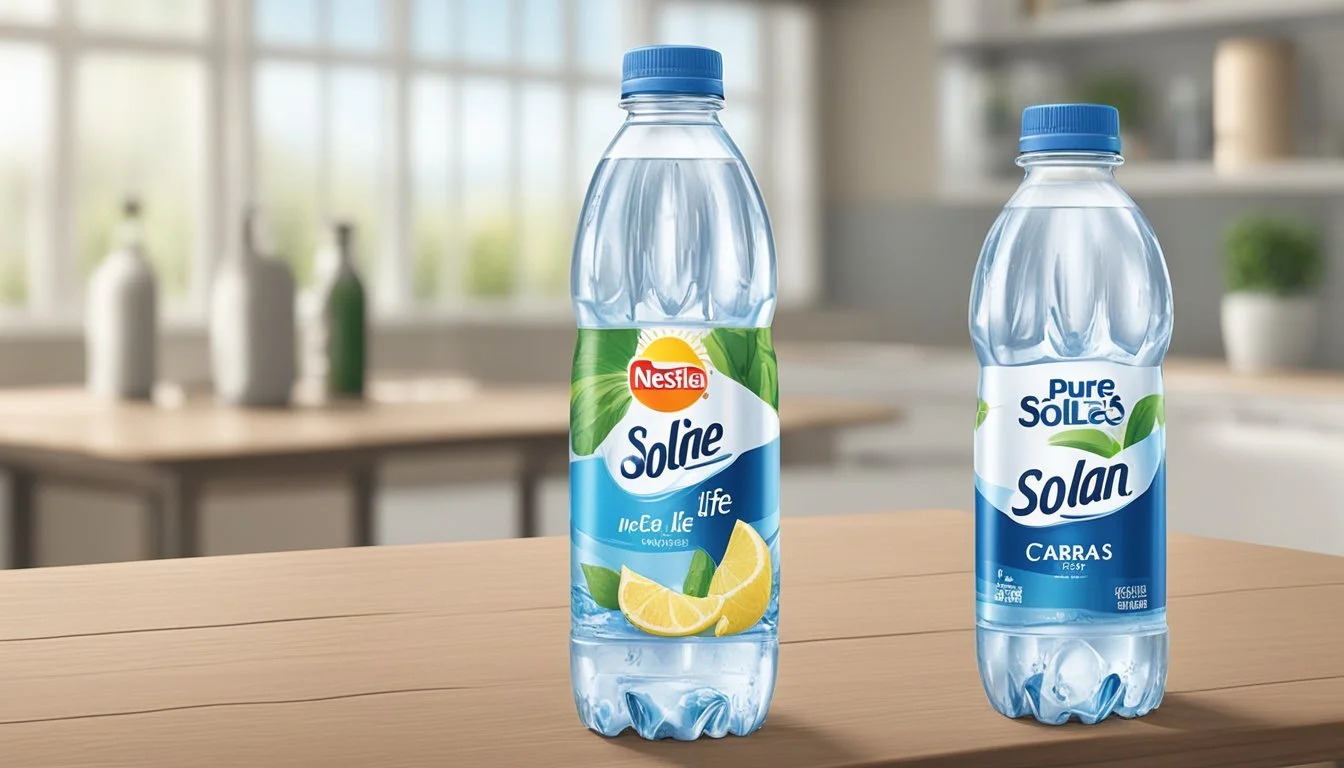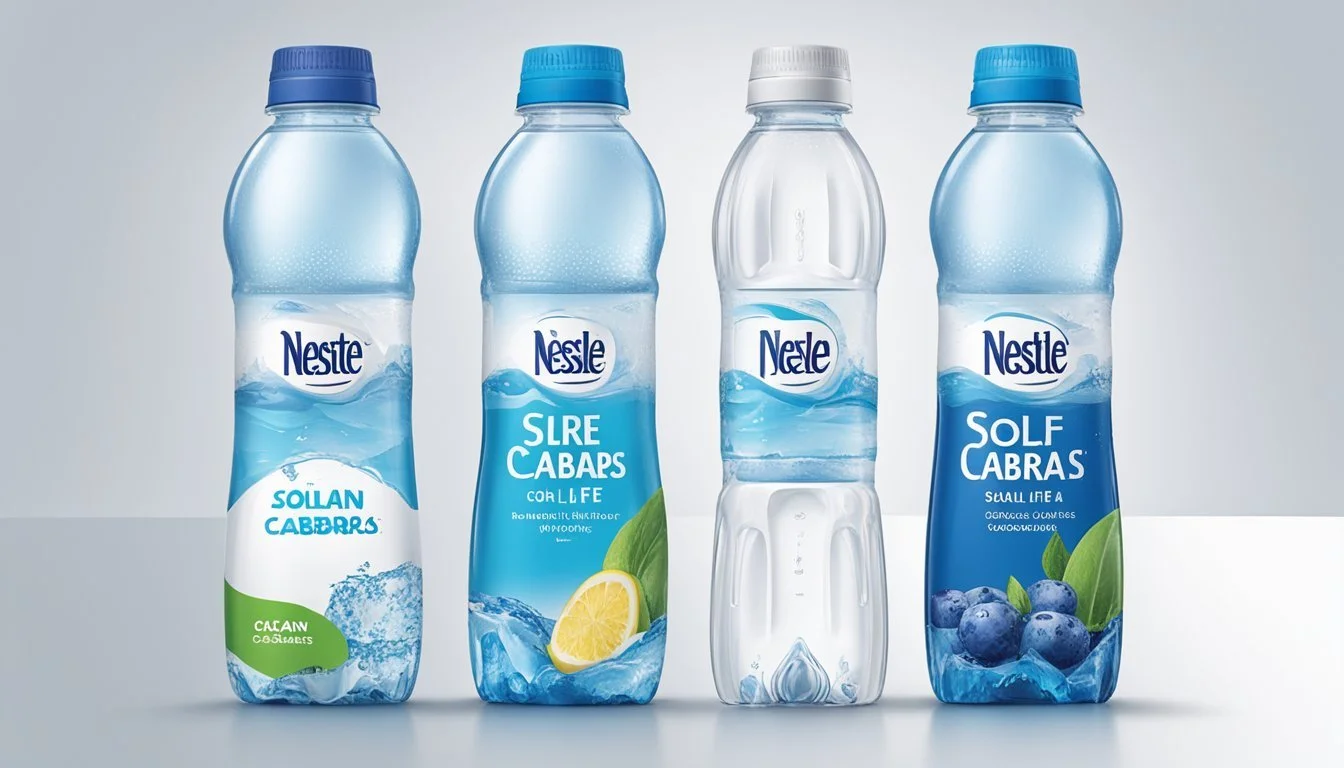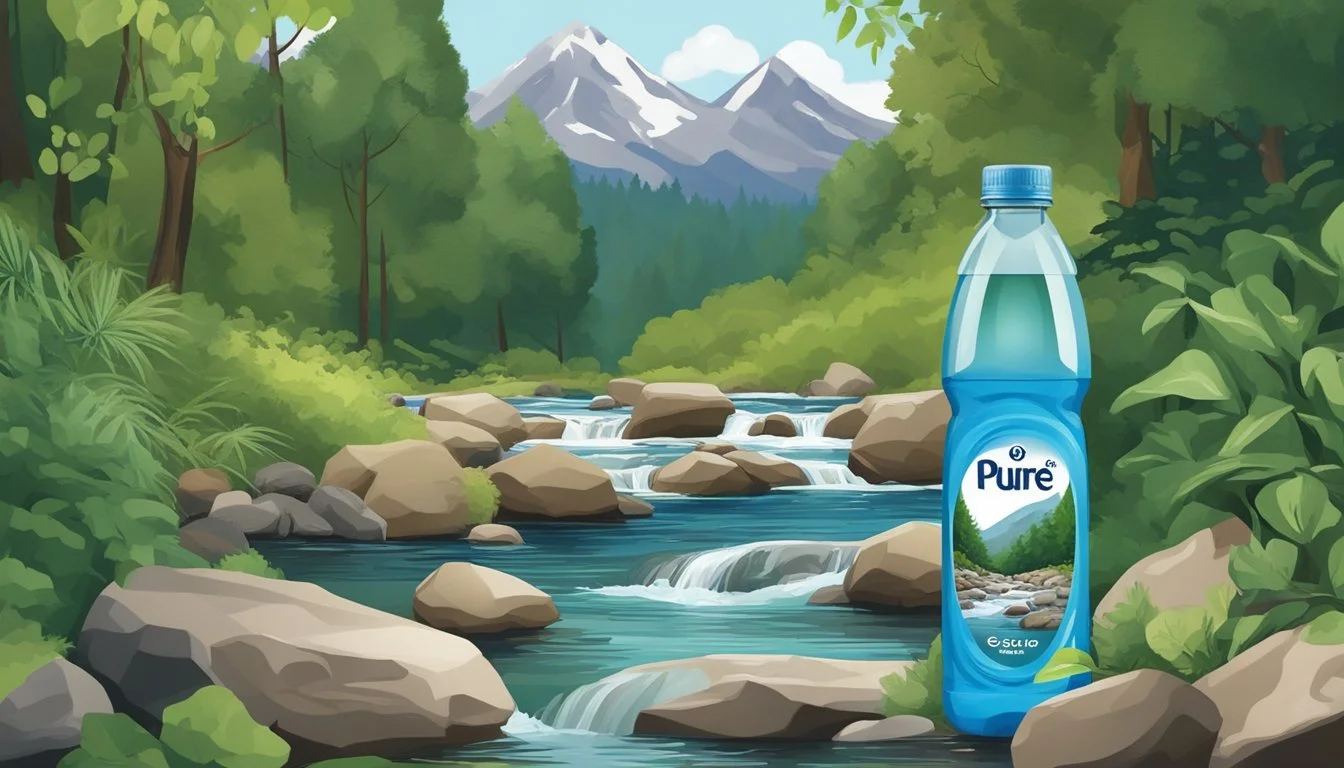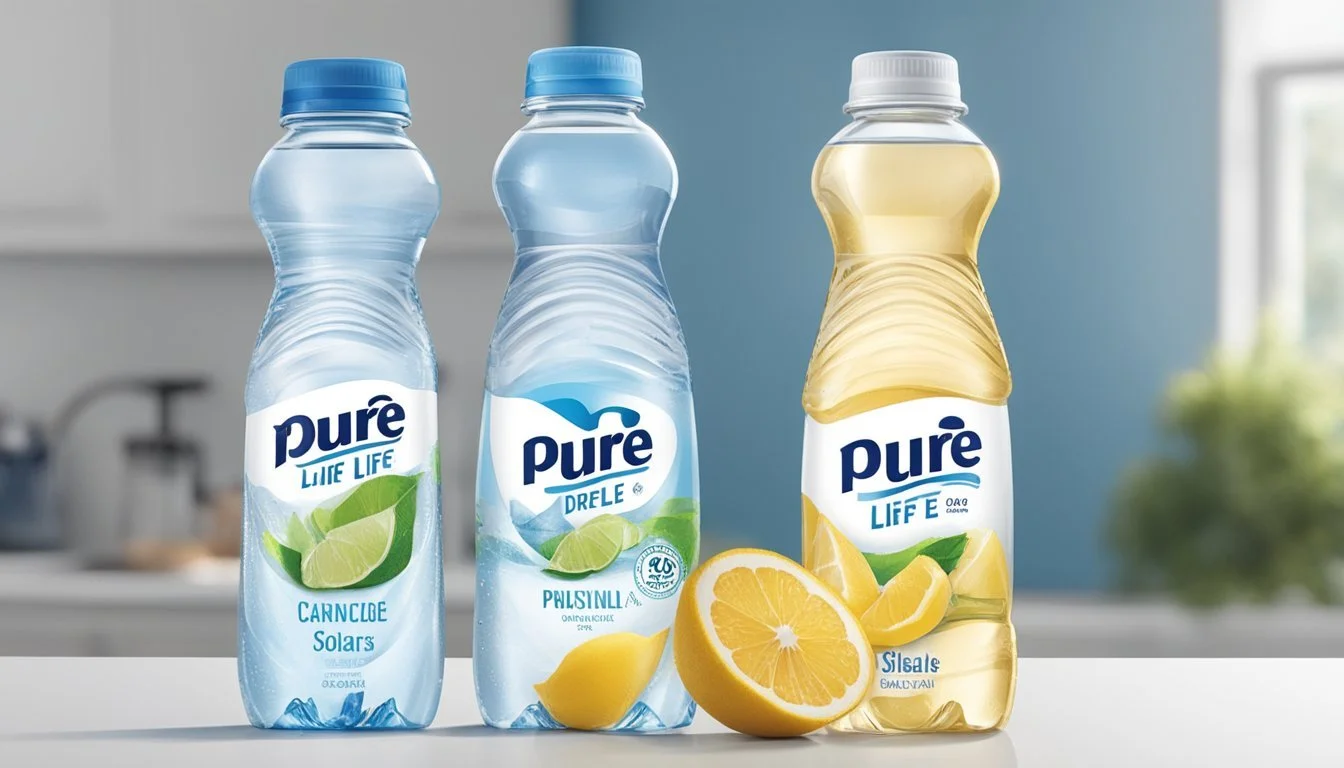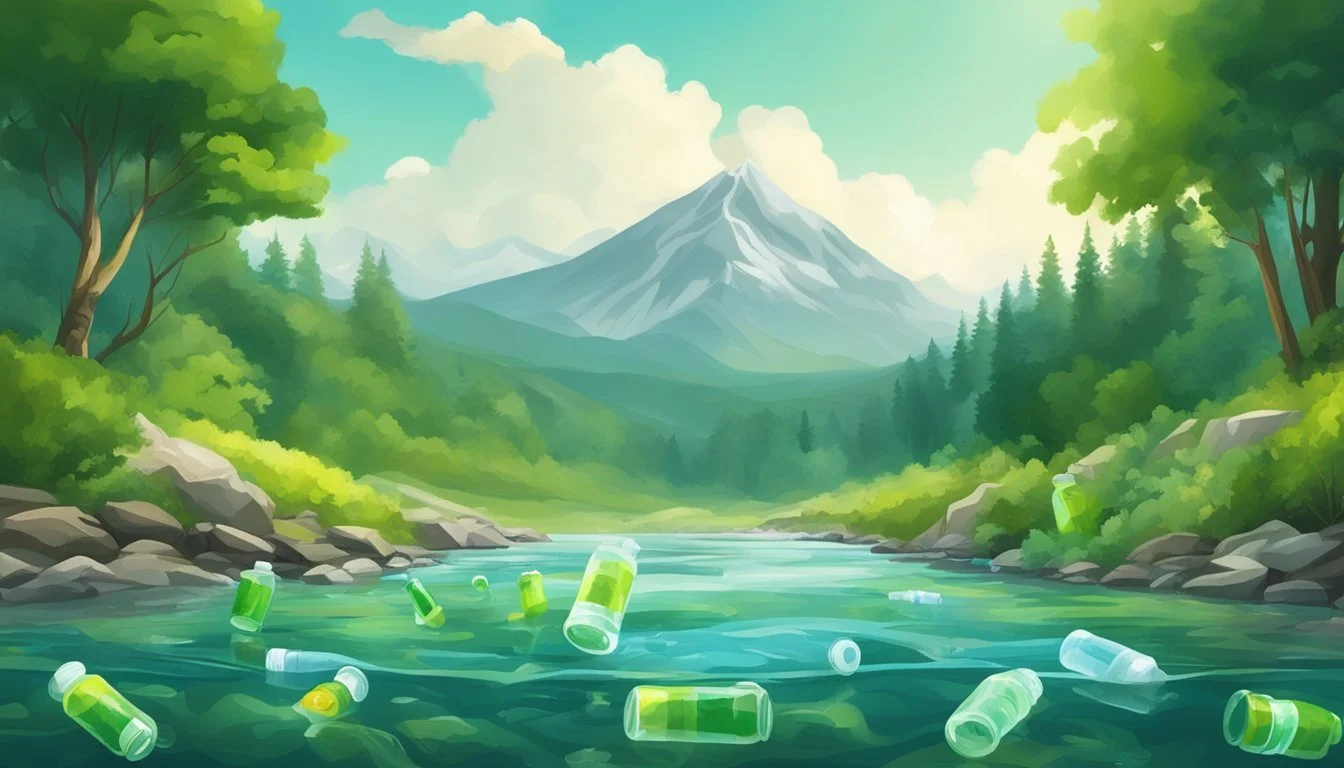Nestlé Pure Life vs. Solán de Cabras
Comparing Bottled Water Quality
When choosing a bottled water brand, consumers often weigh various factors like taste, sourcing, and environmental impact. Nestlé Pure Life and Solán de Cabras are two prominent brands that offer distinct experiences. Nestlé Pure Life is known for its affordability and widespread availability, making it a go-to option for many households.
Solán de Cabras, on the other hand, stands out with its unique mineral composition and premium packaging. For those seeking a premium drinking experience, Solán de Cabras often emerges as the preferred choice due to its distinctive taste and rich mineral content. Comparing these two brands helps highlight the significant differences in what they offer to consumers, from taste to environmental considerations.
Readers looking to make an informed decision will find this comparison particularly insightful. Both brands have their strengths and cater to different preferences, making the choice between Nestlé Pure Life and Solán de Cabras dependent on individual priorities and tastes.
Overview of Bottled Water
Hydration plays a crucial role in maintaining health, and bottled water has become a significant part of how people stay hydrated. This section delves into the reasons tied to the growing popularity of bottled water and the different types available on the market.
Importance of Hydration
Staying hydrated is essential for bodily functions such as joint lubrication, temperature regulation, and toxin removal. Water consists of electrolytes and minerals crucial for maintaining energy and overall health. Not getting enough fluids can lead to dehydration, affecting everything from mood to physical performance.
People often turn to bottled water because it provides a convenient and potentially healthier alternative to other beverages. Hydration can be achieved quickly and easily, no matter where someone is.
Rise of Bottled Water Consumption
Over time, bottled water consumption has surged, becoming a significant part of the beverage industry. Tap water availability hasn't diminished its demand. Many consumers believe bottled water, either spring or purified, is a safer and cleaner option.
The appeal lies in its perceived purity and convenient packaging. Many brands utilize different methods like reverse osmosis to ensure contamination-free water, reassuring consumers about their health choices. Additionally, the availability of multiple packaging options ensures that there is an option suitable for everyone.
Types of Bottled Water
There are several types of bottled water available, catering to varied consumer preferences:
Spring Water: Sourced from natural springs, often contains minerals and is subject to specific quality standards.
Purified Water: Typically undergoes processes such as distillation, deionization, or reverse osmosis to remove impurities.
Mineral Water: Naturally contains minerals and trace elements beneficial for health.
Artesian Water: Drawn from a confined aquifer, it is known for its natural purity.
Comparing these types allows consumers to select based on their preference for taste, mineral content, and purification process. Each type has its unique characteristics, contributing to its niche within the bottled water market.
Brand Analysis
Nestlé Pure Life and Solán de Cabras are two prominent bottled water brands with distinct market positions. Each brand has unique strengths and areas of appeal to different consumer segments.
Nestlé Pure Life's Market Position
Nestlé Pure Life, a product under the umbrella of Nestlé Waters, is a significant player in the bottled water industry. Nestlé Waters manages over 64 brands, making Nestlé Pure Life one of the most recognized names globally. The brand has secured a strong foothold in many markets due to its widespread availability and affordable pricing.
Nestlé Pure Life is particularly popular among consumers seeking a reliable and accessible option. The brand's water undergoes rigorous purification processes and is enhanced with minerals for taste. Despite its market strength, critics often highlight its environmental impact and source transparency as areas for improvement. Nestlé Pure Life ranks among the best-selling bottled water brands but often receives mixed reviews regarding its overall quality and environmental practices.
Solán de Cabras Brand Overview
Solán de Cabras, originating from Spain, offers a premium bottled water experience. Known for its distinctive blue bottle, Solán de Cabras is marketed as an upscale product. The water comes from a natural spring in the province of Cuenca, which lends it a unique mineral composition and taste.
This brand appeals to a niche market that values both quality and brand heritage. The almost chilled flavor profile, even at room temperature, sets it apart from competitors. Solán de Cabras has a reputation for exclusivity and high standards, often associated with luxury and wellness. While not as widely available as Nestlé Pure Life, it maintains a loyal following, particularly in higher-end markets.
Water Source and Composition
Nestlé Pure Life and Solán de Cabras have unique origins and mineral compositions that significantly impact their taste and quality.
Understanding Water Sources
Nestlé Pure Life's water is sourced from various locations and is usually drawn from municipal supplies or regional natural sources. It often undergoes purification processes, including filtration and reverse osmosis, to ensure its safety and quality.
Solán de Cabras, on the other hand, boasts a more singular and historic origin. Sourced from a natural spring in the Serranía de Cuenca, Spain, this water has been naturally filtered through the mountains for thousands of years, providing a unique purity rarely found in bottled water today.
Comparison of Water Composition
Nestlé Pure Life typically features added minerals for taste. These can include calcium chloride, sodium bicarbonate, and magnesium sulfate, which are introduced after the purification process to enhance the flavor and nutritional content of the water.
Solán de Cabras, with its natural spring water origin, contains a specific set of naturally occurring minerals. This spring water includes important minerals such as calcium and magnesium. The composition of Solán de Cabras water also contributes to its slightly alkaline pH, a feature that appeals to a specific segment of bottled water enthusiasts seeking naturally alkaline water.
In terms of mineral content, Solán de Cabras is noted for having a cleaner, more balanced mineral profile compared to many competitors. This is due to its direct sourcing from an ancient aquifer and minimal human intervention in its harvesting and bottling process.
Health and Quality Considerations
Nestlé Pure Life and Solán de Cabras are two popular bottled water brands with significant attention to health and quality. Contaminant levels, mineral content, and purification methods determine their suitability for consumption.
Assessing Water Purity and Quality
Water purity is critical for health. Nestlé Pure Life employs a stringent multi-stage filtration process that includes reverse osmosis and UV treatment to ensure the removal of contaminants such as lead and bacteria. Quality checks are frequent, ensuring the water is safe.
On the other hand, Solán de Cabras is sourced from a spring in Spain and is naturally filtered through layers of rock. This natural filtration provides high purity. The spring water is bottled directly at the source with minimal processing.
Purity Comparison:
Nestlé Pure Life: Multi-stage filtration, frequent quality checks
Solán de Cabras: Natural spring source, minimal processing
Minerals and Health Benefits
The mineral content in bottled water can offer various health benefits. Nestlé Pure Life includes trace amounts of minerals like calcium and magnesium due to its processing but lacks significant quantities compared to natural sources.
Solán de Cabras, rich in natural minerals, includes higher levels of calcium, magnesium, and potassium. These minerals are essential for bone health, muscle function, and overall bodily functions.
Mineral Content:
Nestlé Pure Life: Trace minerals, especially calcium and magnesium
Solán de Cabras: Higher levels of calcium, magnesium, potassium
Choosing between Nestlé Pure Life and Solán de Cabras may depend on individual health needs and preferences regarding mineral intake and processing methods. Each brand offers distinct advantages regarding purity, quality, and health benefits.
Taste Profile and Preferences
The taste of bottled water can vary significantly based on factors like mineral content and purification methods. Personal preferences also play a crucial role in how individuals perceive the flavor of different water brands.
Factors Influencing Water Taste
The taste of Nestlé Pure Life and Solán de Cabras is influenced by several factors such as minerality, purification techniques, and water source.
Minerality: Nestlé Pure Life is known for its neutral taste, which could be attributed to its purification process that removes most minerals. Solán de Cabras, sourced from a natural spring in Spain, boasts a balanced mineral content that adds a slight but refreshing flavor.
Purification Methods: Nestlé Pure Life undergoes a rigorous purification process involving reverse osmosis, ensuring a clean and neutral taste. In contrast, Solán de Cabras relies on natural filtration through geological formations that contribute to its distinctive minerality.
Water Source: Nestlé Pure Life generally sources water from various wells, leading to a consistent but less complex flavor profile. Solán de Cabras, with its single-source spring, offers a profile that is both unique and consistent.
Personal Preferences and Water Taste
Individual preferences greatly impact the perceived taste of bottled water.
Flavor Preferences: Some prefer the crisp, clean flavor of Nestlé Pure Life due to its lack of minerality, finding it more refreshing. Others appreciate the subtly flavored profile of Solán de Cabras, enjoying the natural minerals that add a light taste.
Balance and Refreshing Qualities: The balance in Solán de Cabras makes it preferable for those looking for a more nuanced water taste. Those who prioritize a pure and straightforward water profile might lean towards Nestlé Pure Life for its clean and refreshing qualities.
Cultural and Regional Influences: In Europe, more mineral-rich waters like Solán de Cabras are often preferred, aligning with local tastes. In other regions, consumers may gravitate towards the neutrality of waters like Nestlé Pure Life.
Understanding these aspects helps consumers make informed choices that align with their personal taste preferences.
Environmental and Sustainability Issues
Nestlé Pure Life and Solán de Cabras both contribute to the conversation on environmental impact through their packaging choices and broader sustainability initiatives. Understanding how these brands manage bottle production and waste, alongside their sustainability efforts, is crucial.
Bottle Production and Waste
Nestlé Pure Life and Solán de Cabras use different materials and approaches for their bottle production, impacting their eco-friendliness.
Nestlé Pure Life primarily uses plastic bottles, focusing efforts on lightweighting and increasing the use of recycled plastics. They aim to make their bottles 100% recyclable. This reduces plastic usage but still adds to the environmental burden of plastic waste if not properly disposed of.
Solán de Cabras, in contrast, tends to use glass bottles, which are generally more environmentally friendly. Glass requires more energy to produce but is more easily recyclable and typically reused. However, the weight of glass bottles contributes to higher transportation emissions.
Water Brands and Sustainability Efforts
Nestlé Pure Life engages in numerous environmental initiatives. They invest in water conservation projects and strive for a positive water impact. They also participate in programs aimed at reducing their carbon footprint and improving water quality associated with their bottling processes.
Solán de Cabras emphasizes sustainability through their source protection and bottling processes. They protect natural springs and maintain strict eco-friendly practices. Additionally, their focus on using reusable packaging aligns with their sustainability goals, although they need to balance the ecological costs of glass bottle production.
Both brands are making efforts to improve their sustainability practices, but their methods and areas of focus differ significantly.
Packaging and Convenience
In comparing Nestlé Pure Life and Solán de Cabras, both brands offer unique approaches to packaging design and convenience in bottle sizes.
Bottle Design and Material
Nestlé Pure Life uses a classic approach. Their bottles are made from PET plastic, designed to be lightweight and recyclable. The simple, streamline design aims for practicality and cost-efficiency.
Solán de Cabras, on the other hand, stands out with its iconic cobalt blue glass bottles. This feature not only portrays luxury but is also highly durable, preserving the water's quality. The brand focuses on premium aesthetics, making their bottles more suitable for dining settings and upscale events.
The Convenience Factor in Bottle Size
When it comes to convenience, Nestlé Pure Life offers various bottle sizes, ranging from small 300 ml to large 1.5-liter bottles. This variety caters to different needs, whether for on-the-go hydration or family consumption.
Solán de Cabras tends to focus on fewer sizes, typically 330 ml and 750 ml glass bottles. While these are perfect for individual use or serving at a meal, the glass material makes them less portable than plastic bottles, which can be a disadvantage for those seeking convenience in mobility.
Product Accessibility and Buying Options
Nestlé Pure Life and Solán de Cabras differ significantly in their market reach and purchasing options. Availability varies widely, impacting consumer choice based on location and price considerations.
Availability Across Markets
Nestlé Pure Life is accessible in over 40 countries, catering to a broad audience. It is often found in supermarkets, convenience stores, and online platforms worldwide.
Conversely, Solán de Cabras primarily focuses on the European market. While it can be found in premium grocery stores and specialized retailers, its presence outside Europe is limited compared to Nestlé Pure Life.
Table: Market Availability Comparison
Brand Regions Available Nestlé Pure Life Over 40 countries worldwide Solán de Cabras Predominantly Europe
Purchasing Channels and Pricing
Nestlé Pure Life offers diverse purchasing channels, including bulk buying options at wholesale clubs, regular packs at grocery stores, and individual bottles in vending machines.
Pricing ranges from budget-friendly in large quantities to slightly higher per bottle for convenience buys.
Solán de Cabras is positioned as a premium brand, often found in gourmet shops and high-end supermarkets. Online purchasing is available through specialty retailers and e-commerce platforms.
Pricing reflects its premium status, generally higher than Nestlé Pure Life, particularly when buying smaller quantities.
Comparative Analysis
Nestlé Pure Life and Solán de Cabras each offer unique qualities and characteristics when it comes to bottled water. This section evaluates their taste, quality, and sourcing to determine which might be the better choice for consumers.
Direct Comparison of Nestlé Pure Life and Solán de Cabras
Taste and Quality
Nestlé Pure Life is known for its clean, crisp taste achieved through a rigorous purification process. Solán de Cabras, sourced from natural springs in Spain, offers a softer and more nuanced taste profile, enhanced by mineral content. Both waters maintain high-quality standards, yet consumer preference might hinge on the specific taste experience they seek.
Sourcing and Filtration
Nestlé Pure Life uses purified water sourced from multiple locations and filtered to remove impurities. This makes it consistent but less distinct in flavor. Solán de Cabras is sourced from a spring with historical and mineral significance, offering a more authentic and unaltered taste. The natural filtration process adds to its unique character.
Brand Perception
Nestlé Pure Life, under the Nestlé umbrella, benefits from significant brand recognition and widespread availability. It's seen as a reliable and affordable option. Solán de Cabras, though not as universally known, is perceived as a premium choice due to its historical roots and premium packaging, usually in distinctive blue glass bottles.
Aspect Nestlé Pure Life Solán de Cabras Taste Crisp and clean Soft, mineral-rich Sourcing Multiple, purified sources Natural spring, Spain Brand Widely recognized, affordable Premium, historical
In summary, preference between the two brands might depend on the consumer's taste preference, importance placed on sourcing, and brand perception. Both offer high-quality hydration but cater to slightly different market segments.
More About Nestlé Pure Life
Acqua Panna vs Nestle Pure Life: Which Bottled Water is Better?
Aquafina vs Nestle Pure Life: Which Bottled Water is Better?
Arrowhead vs Nestle Pure Life: Which Bottled Water is Better?
Boxed Water vs Nestle Pure Life: Which Bottled Water is Better?
Core Hydration vs Nestle Pure Life: Which Bottled Water is Better?
Deer Park vs Nestle Pure Life: Which Bottled Water is Better?
Essentia vs Nestle Pure Life: Which Bottled Water is Better?
Ice Mountain vs Nestle Pure Life: Which Bottled Water is Better?
Icelandic Glacial vs Nestle Pure Life: Which Bottled Water is Better?
Just Water vs Nestle Pure Life: Which Bottled Water is Better?
Mountain Valley Spring Water vs Nestle Pure Life: Which Bottled Water is Better?
Nestle Pure Life vs 1907water: Which Bottled Water is Better?
Nestle Pure Life vs 7-Select: Which Bottled Water is Better?
Nestle Pure Life vs Alkaline88: Which Bottled Water is Better?
Nestle Pure Life vs Antipodes: Which Bottled Water is Better?
Nestle Pure Life vs Aqua Carpatica: Which Bottled Water is Better?
Nestle Pure Life vs Big Chill: Which Bottled Water is Better?
Nestle Pure Life vs BodyArmor: Which Bottled Water is Better?
Nestle Pure Life vs Cascade Mountain: Which Bottled Water is Better?
Nestle Pure Life vs Castle Rock: Which Bottled Water is Better?
Nestle Pure Life vs CBD Living: Which Bottled Water is Better?
Nestle Pure Life vs Crystal Geyser: Which Bottled Water is Better?
Nestle Pure Life vs Crystal Lake: Which Bottled Water is Better?
Nestle Pure Life vs Essence pH10: Which Bottled Water is Better?
Nestle Pure Life vs Hawaii Volcanic: Which Bottled Water is Better?
Nestle Pure Life vs Hawaiian Springs: Which Bottled Water is Better?
Nestle Pure Life vs Kirkland Signature: Which Bottled Water is Better?
Nestle Pure Life vs Liquid Death: Which Bottled Water is Better?
Nestle Pure Life vs Mananalu: Which Bottled Water is Better?
Nestle Pure Life vs Open Water: Which Bottled Water is Better?
Nestle Pure Life vs Poland Spring: Which Bottled Water is Better?
Nestle Pure Life vs Proud Source: Which Bottled Water is Better?
Nestle Pure Life vs Pure Life: Which Bottled Water is Better?
Nestle Pure Life vs Purely Sedona: Which Bottled Water is Better?
Nestle Pure Life vs Refreshe: Which Bottled Water is Better?
Nestle Pure Life vs Richard's Rainwater: Which Bottled Water is Better?
Nestle Pure Life vs San Pellegrino: Which Bottled Water is Better?
Nestle Pure Life vs Simple Truth: Which Bottled Water is Better?
Nestle Pure Life vs Smartwater: Which Bottled Water is Better?
Nestle Pure Life vs Talking Rain AQA: Which Bottled Water is Better?
Nestle Pure Life vs The Well: Which Bottled Water is Better?
Nestle Pure Life vs Topo Chico: Which Bottled Water is Better?
Nestle Pure Life vs Tru Alka: Which Bottled Water is Better?
Nestle Pure Life vs Weird Water: Which Bottled Water is Better?
Nestle Pure Life vs Whole Foods 365: Which Bottled Water is Better?
Nestle Pure Life vs Whole Foods Italian Still Mineral water: Which Bottled Water is Better?
Nestle Pure Life vs Zephyrhills: Which Bottled Water is Better?
More About Solán de Cabras
Acqua Pana vs Solan de Cabras: Which Bottled Water is Better?
Antipodes vs Solan de Cabras: Which Bottled Water is Better?
Aqua Carpatica vs Solan de Cabras: Which Bottled Water is Better?
Arrowhead vs Solan de Cabras: Which Bottled Water is Better?
Boxed Water vs Solan de Cabras: Which Bottled Water is Better?
Castle Rock vs Solan de Cabras: Which Bottled Water is Better?
Core Hydration vs Solan de Cabras: Which Bottled Water is Better?
Deer Park vs Solan de Cabras: Which Bottled Water is Better?
Hawaiian Springs vs Solan de Cabras: Which Bottled Water is Better?
Ice Mountain vs Solan de Cabras: Which Bottled Water is Better?
Icelandic Glacial vs Solan de Cabras: Which Bottled Water is Better?
Just Water vs Solan de Cabras: Which Bottled Water is Better?
Mountain Valley Spring Water vs Solan de Cabras: Which Bottled Water is Better?
Poland Spring vs Solan de Cabras: Which Bottled Water is Better?
San Pellegrino vs Solan de Cabras: Which Bottled Water is Better?
Smartwater vs Solan de Cabras: Which Bottled Water is Better?
Solan de Cabras vs 1907water: Which Bottled Water is Better?
Solan de Cabras vs Alkaline88: Which Bottled Water is Better?
Solan de Cabras vs Big Chill: Which Bottled Water is Better?
Solan de Cabras vs BodyArmor: Which Bottled Water is Better?
Solan de Cabras vs Cascade Mountain: Which Bottled Water is Better?
Solan de Cabras vs CBD Living: Which Bottled Water is Better?
Solan de Cabras vs Crystal Geyser: Which Bottled Water is Better?
Solan de Cabras vs Crystal Lake: Which Bottled Water is Better?
Solan de Cabras vs Essence pH10: Which Bottled Water is Better?
Solan de Cabras vs Hawaii Volcanic: Which Bottled Water is Better?
Solan de Cabras vs Kirkland Signature: Which Bottled Water is Better?
Solan de Cabras vs Liquid Death: Which Bottled Water is Better?
Solan de Cabras vs Open Water: Which Bottled Water is Better?
Solan de Cabras vs Proud Source: Which Bottled Water is Better?
Solan de Cabras vs Pure Life: Which Bottled Water is Better?
Solan de Cabras vs Purely Sedona: Which Bottled Water is Better?
Solan de Cabras vs Richard's Rainwater: Which Bottled Water is Better?
Solan de Cabras vs Simple Truth: Which Bottled Water is Better?
Solan de Cabras vs Talking Rain AQA: Which Bottled Water is Better?
Solan de Cabras vs Weird Water: Which Bottled Water is Better?
Solan de Cabras vs Whole Foods 365: Which Bottled Water is Better?
Solan de Cabras vs Whole Foods Italian Still Mineral water: Which Bottled Water is Better?
Topo Chico vs Solan de Cabras: Which Bottled Water is Better?
Zephyrhills vs Solan de Cabras: Which Bottled Water is Better?

